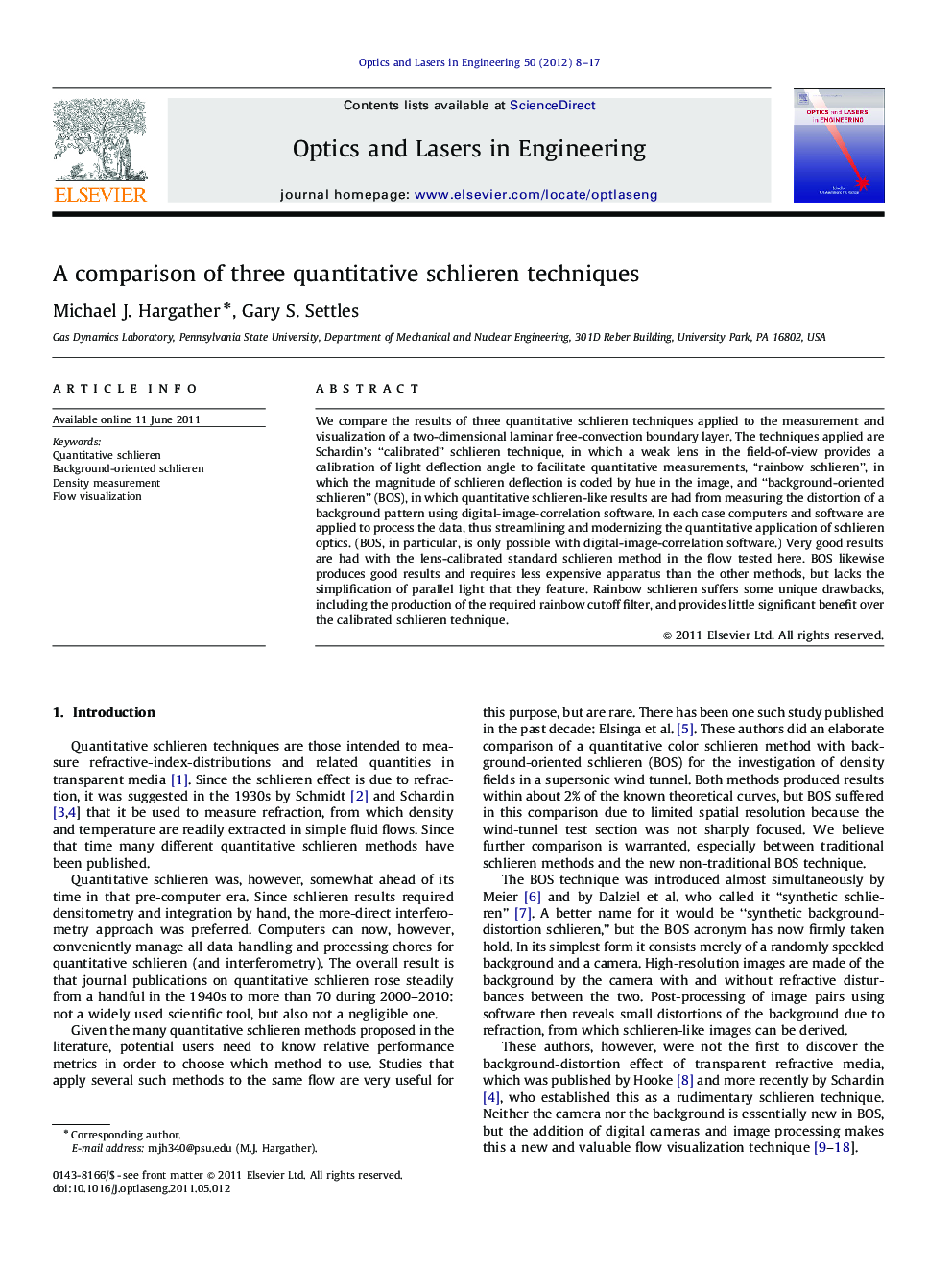| Article ID | Journal | Published Year | Pages | File Type |
|---|---|---|---|---|
| 744904 | Optics and Lasers in Engineering | 2012 | 10 Pages |
We compare the results of three quantitative schlieren techniques applied to the measurement and visualization of a two-dimensional laminar free-convection boundary layer. The techniques applied are Schardin's “calibrated” schlieren technique, in which a weak lens in the field-of-view provides a calibration of light deflection angle to facilitate quantitative measurements, “rainbow schlieren”, in which the magnitude of schlieren deflection is coded by hue in the image, and “background-oriented schlieren” (BOS), in which quantitative schlieren-like results are had from measuring the distortion of a background pattern using digital-image-correlation software. In each case computers and software are applied to process the data, thus streamlining and modernizing the quantitative application of schlieren optics. (BOS, in particular, is only possible with digital-image-correlation software.) Very good results are had with the lens-calibrated standard schlieren method in the flow tested here. BOS likewise produces good results and requires less expensive apparatus than the other methods, but lacks the simplification of parallel light that they feature. Rainbow schlieren suffers some unique drawbacks, including the production of the required rainbow cutoff filter, and provides little significant benefit over the calibrated schlieren technique.
► Three quantitative schlieren techniques were used to measure temperature fields. ► Parallel-light standard schlieren allows the simplest and best measurement. ► A calibration lens is useful for quantitative schlieren.
